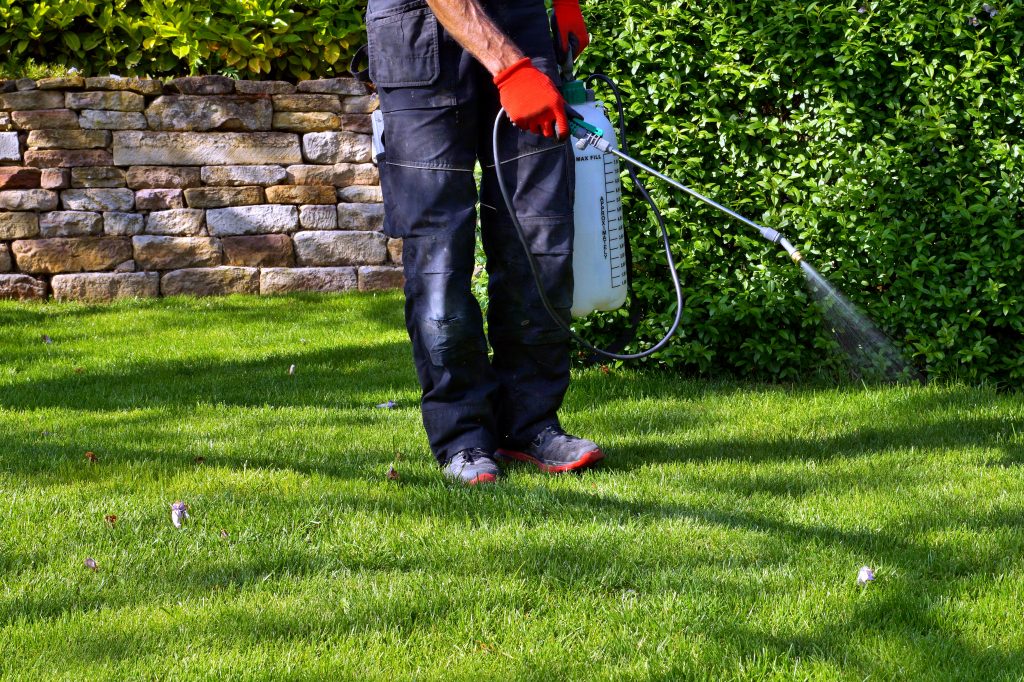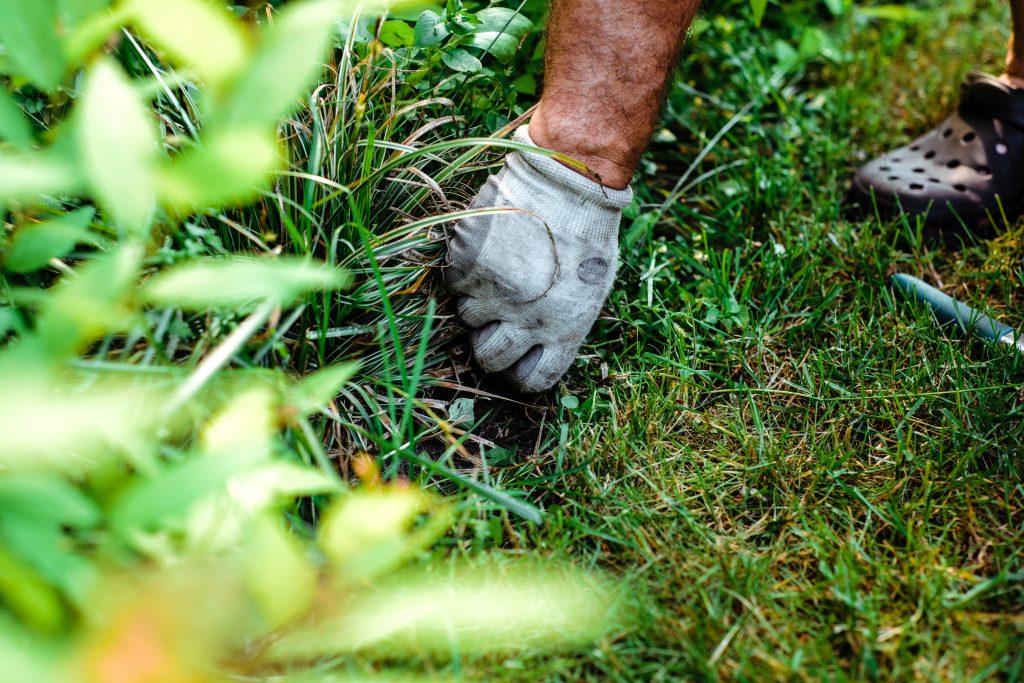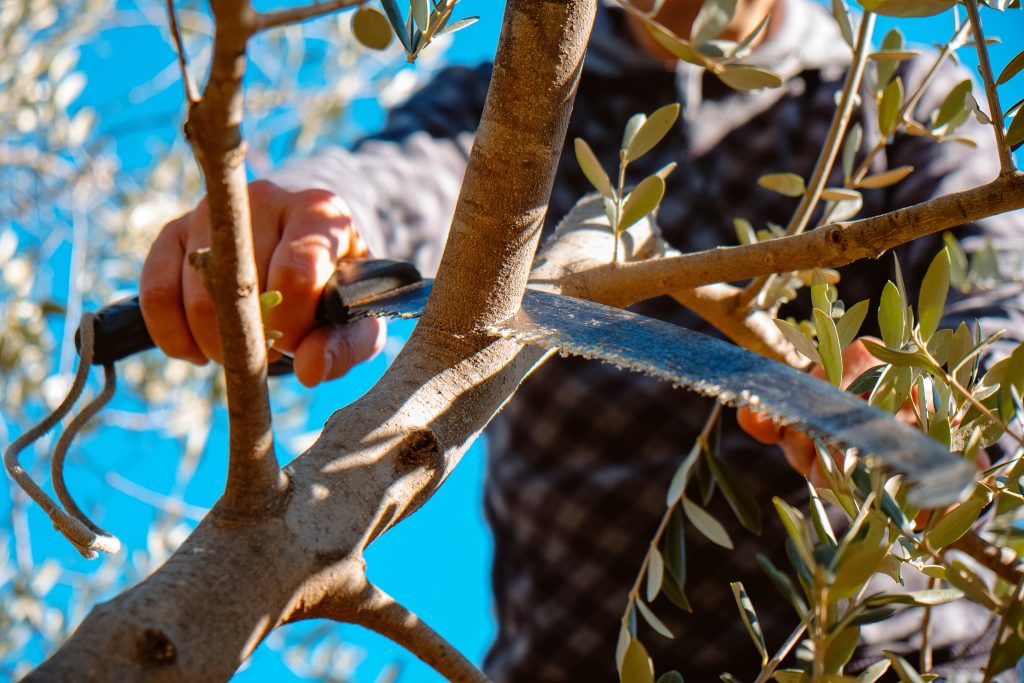Moss is a common problem for many homeowners. While moss can add a unique texture to your lawn, it can also be a sign of underlying issues and can cause damage to your grass if left untreated.
If you are struggling with moss in your lawn, there are several steps you can take to get rid of it and promote a healthier, more vibrant lawn. In this guide, we will explore some effective methods for removing moss from your lawn and preventing it from returning in the future.
Using Moss Killer
Moss killer is a type of herbicide that is specifically designed to target and eliminate moss from lawns.
It is typically used when the moss has become too widespread to be effectively removed by hand or other manual methods. Moss killer works by disrupting the photosynthesis process of the moss, causing it to die off and decompose.
Moss killer is usually applied in a liquid form, either by spraying or watering onto the affected areas.
It is important to follow the manufacturer’s instructions carefully, as the dosage and application method can vary depending on the specific product. Moss killer should only be used when the weather is dry and there is no rain forecasted for several days, as the product needs time to be absorbed by the moss.
Moss killer can be a very effective way to control and prevent moss growth in your lawn, but it should be used with caution as it can also harm other plants and grasses if not applied properly.
It is important to follow all safety precautions and guidelines when using moss killer, and to consider more natural methods of moss control if possible.

Is Moss Killer Safe?
Most moss killers are safe if used correctly and according to the manufacturer’s instructions. However, it’s important to keep in mind that moss killers are typically made up of chemicals, so it’s important to use them with caution and to follow all safety guidelines.
It’s also worth noting that there are natural and organic alternatives to chemical moss killers, such as using vinegar or soap solutions to kill moss. These options may be safer for the environment, but may not be as effective as chemical moss killers.
As with any lawn care product, it’s important to do your research, read product labels carefully, and follow all safety instructions to minimise any potential risks to people, pets, or the environment.
Removing Moss by Hand
Removing moss by hand is a simple and effective method to get rid of moss in your lawn.
This method involves manually pulling the moss out of the lawn, which can be a bit time-consuming but can produce great results if done correctly. By removing moss by hand, you can target the affected areas and leave the healthy grass untouched.
To remove moss by hand, you will need to follow a few steps:
First, you should wait for a dry day when the moss is dry and easier to remove. Then, use a rake or a dethatching tool to loosen the moss and make it easier to pull out. Once the moss is loosened, use your hands to pull it out of the lawn.
Be sure to remove as much of the moss as possible, including the roots, to prevent it from growing back. Brown moss is an indication the moss might be dead and should make it easier to remove.
While removing moss by hand can be time-consuming, it can be a great way to get some exercise and enjoy the outdoors while improving the health of your lawn. Plus, it’s a chemical-free and environmentally friendly method for moss removal.

When to Remove Moss?
How to Stop Moss from Returning?
To prevent moss from returning, you’ll need to address the underlying issues that led to its growth in the first place. Here are some steps you can take:
Improve soil drainage: Moss thrives in wet, poorly drained soil. To prevent moss from coming back, make sure your soil is well-drained. You can achieve this by using a soil aerator (see how to aerate your lawn) on your lawn to improve soil compaction and adding Westland Lawn Sand or Westland Multi-Purpose Compost to improve soil structure.
Increase sunlight: Moss loves shady areas. To discourage its growth, trim back overhanging branches or prune nearby bushes to allow more sunlight to reach the lawn.
Address nutrient imbalances: Moss often grows in areas where there is an imbalance of nutrients in the soil. A soil test can help identify any nutrient deficiencies, and you can adjust your fertilisation regimen accordingly.
Reseed your lawn: If moss has taken over a large portion of your lawn, consider reseeding the area with grass that is better adapted to the growing conditions of your lawn.

By taking these steps, you can help prevent moss from coming back and promote a healthy, lush lawn.
